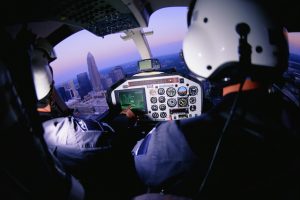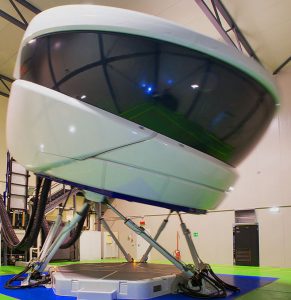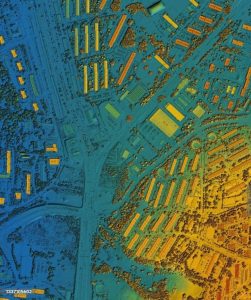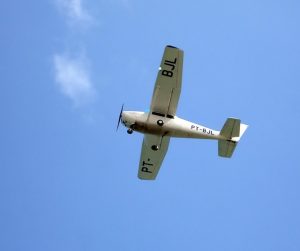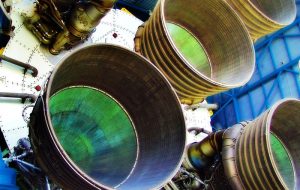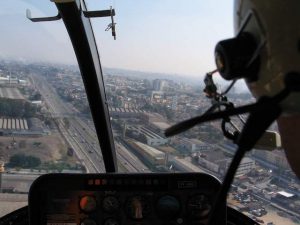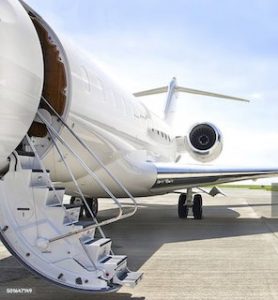Understanding Modern Day General Aviation Industry
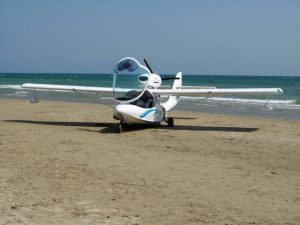 General aviation is a broad segment of the aviation industry. It encompasses all flights that are not part of commercial airline operations. This includes private flights, business jet travel, air ambulances, flight training, and aerial work such as crop dusting. General aviation serves various purposes, from recreational flying to important business and emergency services.
General aviation is a broad segment of the aviation industry. It encompasses all flights that are not part of commercial airline operations. This includes private flights, business jet travel, air ambulances, flight training, and aerial work such as crop dusting. General aviation serves various purposes, from recreational flying to important business and emergency services.
Unlike commercial airlines, general aviation allows more flexibility. Aircraft can operate at smaller airports, offering a wider range of destinations. These airports are often less crowded and more accessible, providing an efficient and personalised experience for passengers and pilots alike.
The scope of general aviation
General aviation is vast and diverse. It covers everything from small single-engine planes to large private jets. Business aviation is a significant part of the general aviation sector, allowing companies and executives to travel quickly and efficiently. Recreational flying is another key aspect, with thousands of pilots enjoying leisure flights in small planes.
In addition to these, general aviation plays a vital role in public services. Air ambulances transport patients in critical conditions, while law enforcement and firefighting aircraft assist in emergency situations. General aviation provides vital support to communities, especially in remote and rural areas where commercial flights are unavailable.
General aviation airports and their facilities
General aviation airports are spread across the globe. These airports cater specifically to non-commercial flights. While they may not handle the high volumes of traffic seen at larger commercial airports, they are equipped with necessary services to meet the needs of general aviation passengers and pilots.
Such airports typically have smaller terminals compared to commercial airports. They provide facilities like hangars for aircraft storage, fueling services, and maintenance areas. Many general aviation airports offer private terminals or lounges where passengers can relax while waiting for their flights. These terminals are usually less crowded, ensuring a more comfortable experience for travellers.
Economic impact of general aviation
General aviation has a significant impact on the global economy. It supports industries such as tourism, business, and emergency services. Additionally, general aviation airports provide jobs and stimulate local economies. Many general aviation airports rely on the income generated from aircraft parking, hangar rentals, and fuel sales.
Business aviation alone contributes billions of dollars annually. Companies that use private aircraft for travel benefit from increased productivity and time savings. These benefits extend to the broader economy by enhancing business efficiency and encouraging economic growth.
Safety standards
Safety is a top priority in general aviation. The aviation industry, including general aviation, is subject to strict safety standards regulated by organizations such as the Federal Aviation Administration (FAA) in the United States. Pilots and aircraft operators must adhere to detailed safety protocols, including regular inspections, certifications, and training.
In addition, general aviation pilots must meet certain qualifications to operate specific types of aircraft. They must pass medical exams and acquire the necessary certifications to fly safely. These measures are designed to ensure the safety of passengers and crew, particularly since general aviation flights often operate outside the control of commercial airline systems.
Technological advancements
Technological advancements have greatly impacted general aviation. New aircraft designs, improved navigation systems, and advanced communication technologies have made flying safer and more efficient. Modern aircraft are equipped with sophisticated avionics, allowing pilots to navigate more accurately and handle flight operations with ease.
Furthermore, air traffic control systems have been upgraded to provide better management of both commercial and general aviation airspace. This ensures that private aircraft can operate safely without interfering with scheduled airline flights. Technological innovations continue to drive the growth of general aviation, making flying more accessible and efficient.
Training and certification for general aviation pilots
Pilot training is a cornerstone of general aviation. Aspiring pilots must undergo a series of courses to become certified. Flight schools provide hands-on training with experienced instructors, and students must complete both ground school and flight hours. Certification requirements vary depending on the type of aircraft being operated and the level of qualification sought.
For example, private pilot certificates allow individuals to fly small aircraft for personal or recreational purposes. More advanced certifications, such as commercial pilot and airline transport pilot licenses, enable pilots to operate larger aircraft for business or commercial purposes. The training process ensures that pilots have the skills necessary to safely operate aircraft and manage unexpected situations.
Contribution to emergency services
General aviation plays a vital role in emergency services. Air ambulances are the most well-known application of general aviation in emergencies. These aircraft can quickly transport patients in critical conditions to medical facilities, saving valuable time during life-threatening situations.
In addition to air ambulances, general aviation is also used by law enforcement and firefighting agencies. Aircraft assist in monitoring wildfires, conducting search and rescue operations, and supporting surveillance efforts. These services are crucial, especially in areas where ground access is limited or difficult.
Private aircraft
Private aircraft are a prominent part of the general aviation sector. These aircraft offer business executives the ability to travel on their own schedule, avoiding the delays and restrictions of commercial flights. Business aviation allows companies to maintain flexibility, enhancing efficiency and reducing travel time.
Business jets vary in size, from smaller light jets to large, long-range aircraft. These planes are equipped with comfortable seating, advanced communication systems, and luxurious interiors, providing a premium flying experience. Many executives choose to fly privately to maximise productivity, conduct meetings during flights, and enjoy a higher level of comfort and convenience.
Future of general aviation
The future of general aviation looks promising. As technology continues to improve, general aviation aircraft are becoming more affordable, efficient, and environmentally friendly. Electric aircraft, for example, are emerging as a more sustainable alternative to traditional fuel-powered planes.
Moreover, new aircraft designs are being developed to improve safety, reduce noise, and increase fuel efficiency. This progress will make general aviation more accessible to a wider range of individuals and businesses. Increased government support for general aviation infrastructure and safety improvements will also play a role in its growth.
Impact on air traffic control systems
The growth of general aviation has prompted advancements in air traffic control systems. To manage the increasing number of private aircraft operating alongside commercial flights, ATC systems have been upgraded. Modern radar systems, satellite tracking, and digital communication have improved coordination and safety in busy airspaces.
General aviation aircraft are now better integrated into controlled airspace, ensuring that pilots have clear flight paths and avoid conflicts with commercial airline traffic. Air traffic controllers are trained to manage the flow of both commercial and general aviation aircraft, ensuring safety and efficiency across the board.
Cost considerations
Flying in general aviation can be costly, particularly for private aircraft owners. The expenses involved include aircraft purchase or lease, maintenance, fuel, insurance, and pilot salaries. However, the benefits of owning or chartering a private aircraft often outweigh the costs, especially for business owners who need to travel frequently.
For individuals and businesses, there are options to reduce costs, such as sharing flights or chartering aircraft instead of owning them. This flexibility allows users to access general aviation services without the financial burden of full ownership.
Environmental considerations
General aviation, like other aviation sectors, has an environmental impact. Aircraft emit carbon dioxide (CO2) and other greenhouse gases, contributing to climate change. However, advancements in technology, such as the development of electric aircraft, aim to reduce these emissions and make general aviation more sustainable.
In addition, the industry is exploring the use of alternative fuels to reduce reliance on traditional jet fuel. The integration of greener technologies will help reduce the carbon footprint of general aviation, making it a more environmentally friendly option for air travel.
Community connectivity
General aviation plays a vital role in connecting communities, especially in rural and remote areas. While commercial airlines serve major cities, many smaller towns and regions rely on general aviation for access to transportation, goods, and services.
In some regions, general aviation serves as the primary means of transportation. Small aircraft connect communities that may otherwise be isolated due to a lack of commercial flights or ground infrastructure. This connectivity is particularly important in areas prone to natural disasters, where general aviation can provide quick access to aid and resources.
Supporting growth
Governments and private organizations are taking steps to support the growth of general aviation. This includes investing in infrastructure, such as airports and hangars, and providing funding for research and development in aviation technology. By improving access to general aviation services, these efforts help drive economic growth and enhance connectivity across regions.
Many airports are expanding their facilities to accommodate both commercial and general aviation aircraft. This expansion is vital to support the increasing demand for private flights, business aviation, and other general aviation services.
Future of private aircraft ownership
As the aviation industry evolves, the future of private aircraft ownership is shifting. More people are exploring fractional ownership or aircraft chartering, reducing the financial commitment required for full ownership. These options provide individuals and businesses with access to private aircraft without the high costs associated with sole ownership.
Fractional ownership programs allow individuals or companies to share the costs of aircraft ownership, including maintenance, insurance, and fuel. This trend is expected to grow, offering more people the chance to experience the benefits of private aviation without the full financial burden.
Contribution to global transportation
General aviation is an integral part of global transportation systems. It provides flexibility and accessibility, making it easier for businesses and individuals to travel. Whether for business, recreation, or emergency services, general aviation meets the diverse needs of modern air travel.
While general aviation may never match the volume of commercial airline traffic, it plays an essential role in maintaining the global transportation network. As technology continues to advance, the sector will likely experience continued growth, making general aviation even more accessible and efficient.
Shaping the future of air travel
The growth of general aviation is shaping the future of air travel. As technological advancements continue, more people will have access to private flights and business aviation services. This evolution ensures that general aviation remains a key player in the aviation industry for years to come.


